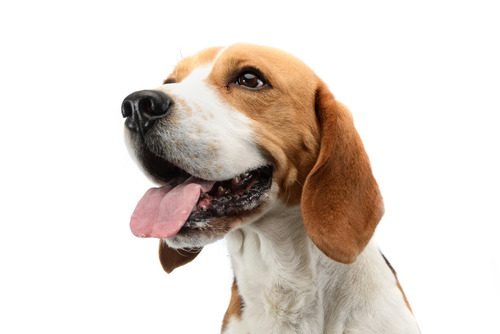Panting is a normal behavior for dogs, but sometimes it can be a sign that something is wrong. Understanding when your dog’s panting is normal and when it might be a sign of a health issue is essential for keeping them happy and healthy. In this blog, we’ll explore various reasons why dogs pant, how to differentiate between normal and excessive panting, and when it’s time to seek veterinary help from the experts at Gray Animal Hospital.

What Causes Normal Dog Panting?
Dogs pant to regulate their body temperature. Unlike humans, dogs don’t sweat through their skin to cool down; instead, they pant to evaporate moisture from their tongues, nasal passages, and the lining of their lungs, allowing them to cool off.
Common Situations That Lead to Panting
- Exercise: After play or exercise, it’s normal for your dog to pant heavily as they attempt to restore their body temperature to a normal level.
- Heat: On hot days, dogs pant more to cool themselves down.
- Excitement or Stress: Emotional responses can also cause dogs to pant. Whether they’re happy to see you or feeling anxious during a thunderstorm, panting is a natural response.
When Is Panting Considered Excessive?
Sometimes panting isn’t just because your dog is hot or has been running around. Excessive panting could be a sign of underlying health issues. Signs of excessive panting include:
- Panting that occurs more frequently: If your dog is panting more than usual without an obvious reason, it might be cause for concern.
- Panting at odd times: Panting during cooler times or at night when your dog should be resting could indicate a problem.
- Changes in the sound or appearance of panting: If panting seems more labored or sounds harsher, it could be a sign of respiratory issues or discomfort.
Health Issues Associated with Excessive Panting
Several health conditions can cause your dog to pant excessively. It’s important to observe other symptoms to provide your vet with as much information as possible. Dogs with heart disease may pant more because their hearts cannot pump blood effectively enough to meet their body’s needs. Respiratory disorders like lung disease or obstructions can make breathing more difficult, leading to increased panting. Dogs also often pant when they’re in pain. Conditions such as arthritis, injuries, or internal discomfort can lead to excessive panting.
What You Can Do If Your Dog Is Panting Excessively
While you should never try to treat your dog’s excessive panting at home without professional advice, there are steps you can take to ensure their comfort and safety before you can get them to a vet.
- Provide a Cool Environment: Make sure your dog has a cool, shady place to rest and access to fresh water.
- Monitor Their Activity: Avoid excessive exercise, especially on hot days, and keep your dog calm.
- Observe and Note Other Symptoms: Keep a record of when the panting occurs, its intensity, and any other associated symptoms or behaviors.
How Gray Animal Hospital Can Help
At Gray Animal Hospital, we understand the nuances of dog behavior and health. If you’re concerned about your dog’s panting, call us at (224) 304-0668 or book an appointment online. Our team is here to ensure your dog receives the best possible care, tailored to their specific needs. Early diagnosis and treatment can make a significant difference in the outcome of many conditions associated with excessive panting.
